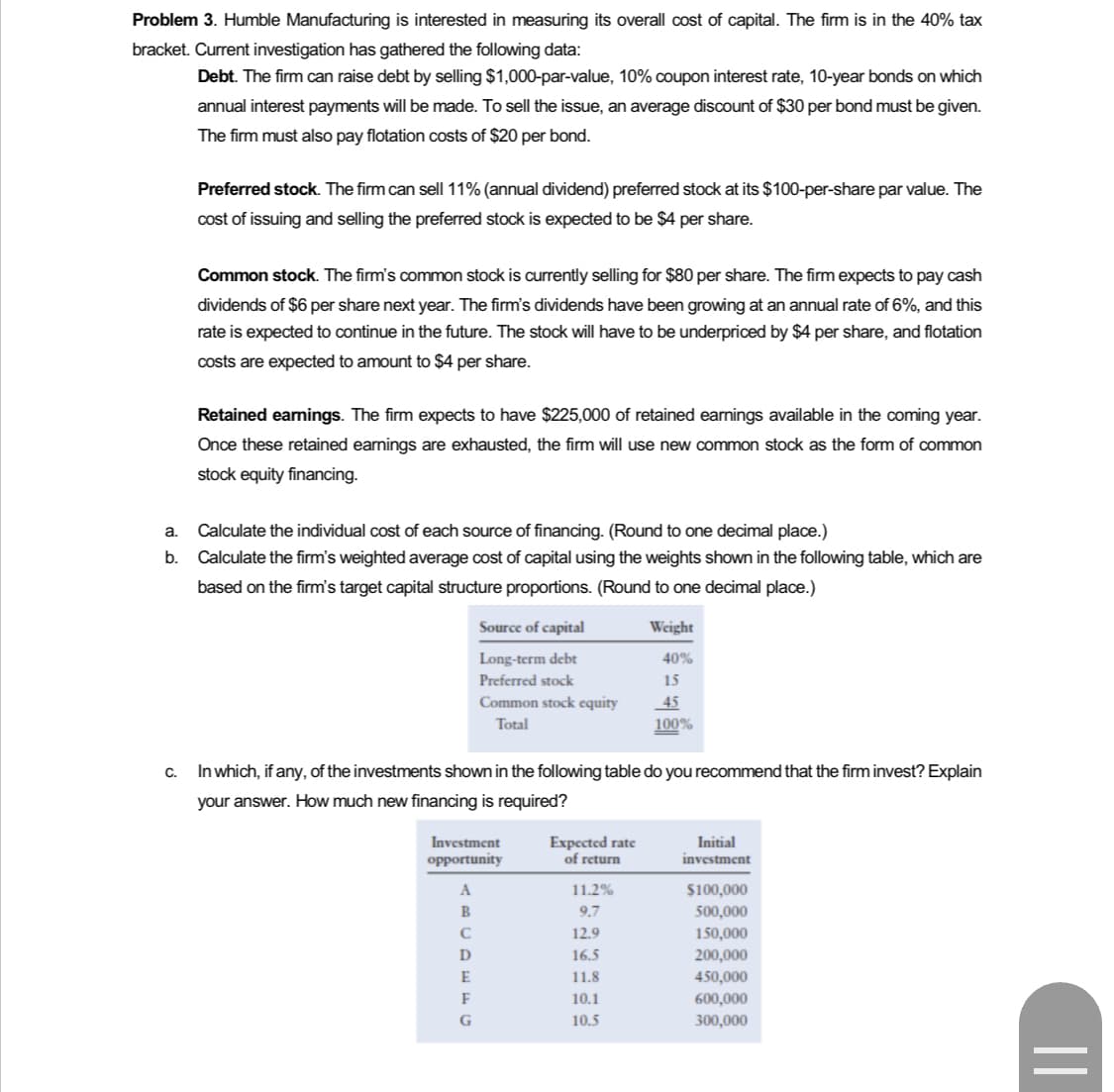Problem 3. Humble Manufacturing is interested in measuring its overall cost of capital. The firm is in the 40% tax bracket. Current investigation has gathered the following data: Debt. The firm can raise debt by selling $1,000-par-value, 10% coupon interest rate, 10-year bonds on which annual interest payments will be made. To sell the issue, an average discount of $30 per bond must be given. The firm must also pay flotation costs of $20 per bond. Preferred stock. The firm can sell 11% (annual dividend) preferred stock at its $100-per-share par value. The cost of issuing and selling the preferred stock is expected to be $4 per share. Common stock. The firm's common stock is currently selling for $80 per share. The firm expects to pay cash dividends of $6 per share next year. The firm's dividends have been growing at an annual rate of 6%, and this rate is expected to continue in the future. The stock will have to be underpriced by $4 per share, and flotation costs are expected to amount to $4 per share. Retained earnings. The firm expects to have $225,000 of retained earnings available in the coming year. Once these retained earnings are exhausted, the firm will use new common stock as the form of common stock equity financing. a. Calculate the individual cost of each source of financing. (Round to one decimal place.) b. Calculate the firm's weighted average cost of capital using the weights shown in the following table, which are based on the firm's target capital structure proportions. (Round to one decimal place.) Source of capital Weight Long-term debt 40% Preferred stock 15 45 Common stock equity Total 100% C. In which, if any, of the investments shown in the following table do you recommend that the firm invest? Explain your answer. How much new financing is required? Investment opportunity Expected rate of return Initial investment A 11.2% $100,000 B 9.7 500,000 C 12.9 150,000 D 16.5 200,000 E 11.8 450,000 10.1 600,000 G 10.5 300,000
Cost of Debt, Cost of Preferred Stock
This article deals with the estimation of the value of capital and its components. we'll find out how to estimate the value of debt, the value of preferred shares , and therefore the cost of common shares . we will also determine the way to compute the load of every cost of the capital component then they're going to estimate the general cost of capital. The cost of capital refers to the return rate that an organization gives to its investors. If an organization doesn’t provide enough return, economic process will decrease the costs of their stock and bonds to revive the balance. A firm’s long-run and short-run financial decisions are linked to every other by the assistance of the firm’s cost of capital.
Cost of Common Stock
Common stock is a type of security/instrument issued to Equity shareholders of the Company. These are commonly known as equity shares in India. It is also called ‘Common equity

Trending now
This is a popular solution!
Step by step
Solved in 3 steps with 2 images









